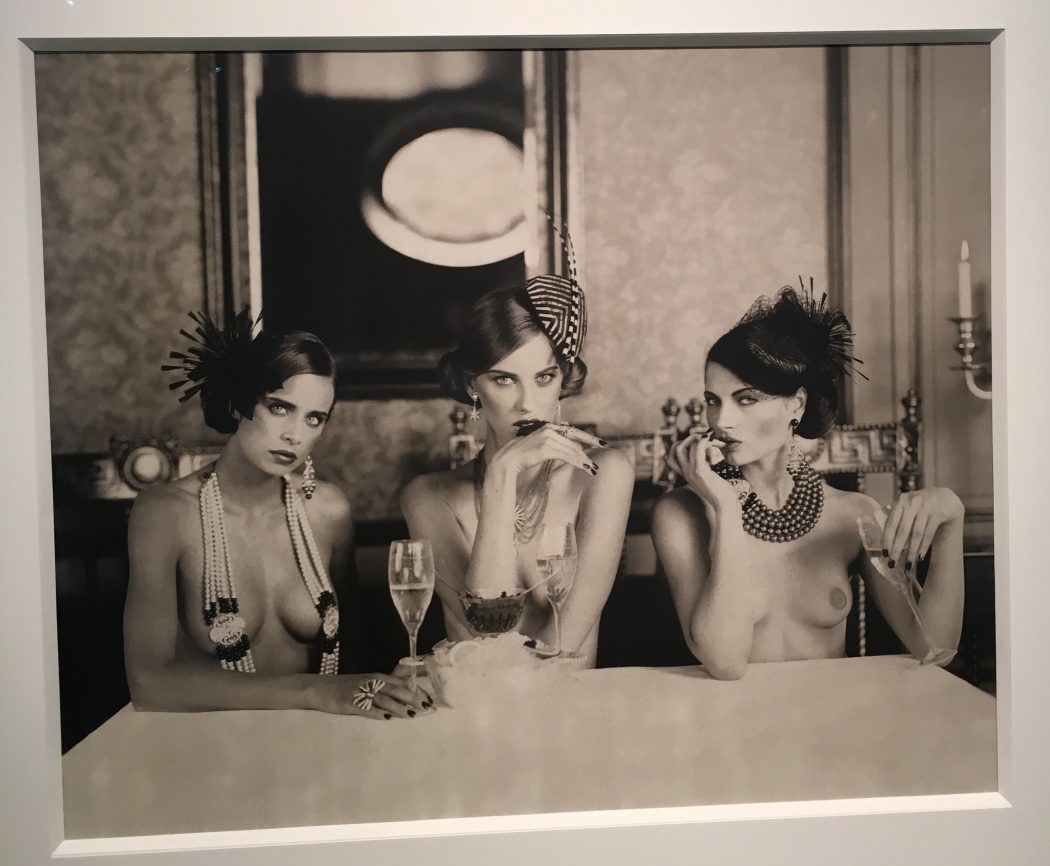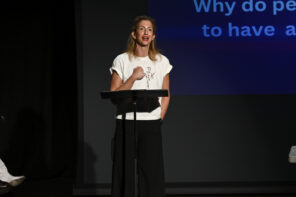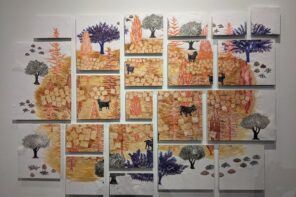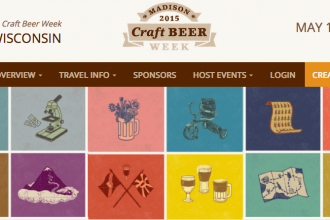art NY | Did You See BANKSY?
Pier 94
12th Avenue at 55th Street
New York, NY 10019
written + photographed by Irene Plax
[dropcap letter=”A”]spring chill was in the air and the wind was mighty, but that didn’t stop New Yorkers from showing up in style at the artNY Fair, at Pier 94 on Manhattan’s West Side. The crowd was diverse, dotted with Iris Apfel-esque art enthusiasts all the way down to little kids playing with arts and crafts in the Children’s Museum of Arts Booth. Guests were trendy, and many were proud to sport their flamboyance, from plaid bow ties to outlandish head-to-toe attire. Of course, there were plenty of tunics and classic looks. Artists (including actor-turned-visual artist Adrien Brody), curators, and admirers traipsed about the three main wings of exhibits and galleries.
The artNY Fair happened the same weekend as the Frieze (2017, here we come), and some call the Frieze more conceptual, but they’re both strong contemporary art shows. The artNY Fair is presented by Art Miami, and Miami galleries were bountifully represented. There were many sculptures, tons of pop art and photography, and incredible neon light installations.
“There’s lots of Cuban art! Everyone’s jumping on the open Cuban bandwagon,” said Brian Swier, a partner in the Mercury Lounge and Bowery Ballroom in NYC and the Teragram Ballroom in LA. He and his girlfriend, writer Leia Menlove, were checking out art for the venues as well as for their personal collection.
In the Blankspace Exhibit, an aluminum wire and fiberglass life casting by Yu Hyeon Jeon draped across a wall. Iridescent materials layered as intricately as feathers covered taxidermy busts by artist Enrique Gomez de Molina at the Bernice Steinbaum Gallery. People paused as they rounded the corner at Special Project 8 to stare at the intuitive lines in Louis Carreon’s painting, Tribal Faces.
“Did you see the Banksy? Look there’s two of them!”
I overheard this throughout my chat with David Smith, the owner of the SmithDavidson gallery (based in Amsterdam and Miami) at the artNY fair last weekend in New York.
He did indeed have two Banksy pieces on display, as well as works from Os Gemais, Damien Hirst, and a Monet. The impressive list goes on, but two of my personal favorites were Paul Rousso and George “Hairbrush” Tjungurrayi.
Amsterdam is where Smith grew up, playing piano and singing, while his father owned a gallery curated with works primarily of Dutch 19th century art. Seascapes, landscapes, and town views made up the figurative art that surrounded him in childhood. Smith took over the business at 20 when his father passed away and eventually, he began moving the art “North of 1860, if you will,” meaning into more contemporary territory. But it wasn’t an immediate jump.
Smith is known for curating prestigious impressionists, as well as Picasso’s, and, in the last ten years, has moved more into modern pieces. His eclectic tastes have one thing in common: mastery, or what he calls, “That last two percent. I can’t explain it any other way. It has to be perfect or it isn’t perfect.”
If you look at the old masters, it’s the same thing. The technique and the essence of the piece, it has to do something for me. I can look at something and see why other people like it and appreciate it. Your taste doesn’t have to be my taste. But there is a lot of stuff that’s just BS. It’s a piece of wood on the floor, and you’re making a big story about it. I don’t see that as pure visual art.
When questioned how Banksy fits into this thinking, he responds, “Visually, for me, if I see two coppers kissing each other, it does mean something. It does get a reaction. You see it visually, and it’s so raw, it’s street art and it’s a critique. It’s ‘finished’. I love conceptual art. It works when it’s the artist’s idea. You see so many people trying to do the same thing. Maybe that’s what happened with Impressionism. You take it further and you have Neo-Impressionism, and it just isn’t there anymore. I personally think if you’re making something you should be able to make something. Picasso, Mondrian, they were great painters. Then they decided to do something different. But they were masters of the technical parts. The basics. It has to be pure. You as the interpreter have to feel something. I feel many people are following.”
Paul Rousso is an artist Smith considers to have that mastery. The Rousso pieces exhibited at their booth were mixed media in hand-sculpted acrylic and hand-sculpted plastic (the shinier pieces). I sensed discord or irreverence in the content when I saw them from afar. I’ve always been drawn to fabric draping in sculpture, like the Winged Victory, and the Hellenistic sense of movement beneath clothing. To me, Rousso’s work had that same tactile appeal up close, and it was difficult not to reach out and touch his pieces. Especially on his pieces of The Times and The Wall Street Journal, where the acrylic pages newspapers were splayed and rumpled, I was drawn to the sensuous folds and impressed by the realistic details like the small, jagged edges of the bottom of the newspaper. This, to me was the last 2% that Smith mentioned.
My other favorites were the Aboriginal pieces. They were large scale paintings (72 x 96 inches) made up of hand painted lines that had a very emotional quality. There was no “Magic eye” affect, as there can be on some line paintings, but you could see the artist’s hand in every inch of canvas, which is something I have come to love. When I spoke with Smith about how he got into these paintings, he said:
“In 2006 I fell in love with them traveling Australia, and we started collecting. I just started buying, wasn’t dealing. We had it shipped back to Holland, and when we returned and saw it there, we said, ‘We have to start exhibiting this!’ Starting in 2007, I became an expert in the field, and we’re one of the biggest galleries outside of Australia (of Aboriginal work). It’s the opposite of what I was just saying about contemporary art. With our Western contemporary art you have a story, which in my opinion almost gets created before the artwork. But this is thousands of years old; the oldest culture on the planet, and they visually show you their interpretation of the creation. That’s what these paintings are. That’s how they paint, sitting on the ground. This artist, Tjungurrayi, is nicknamed “Hairbrush” because his hair stands straight up, and he uses it as his paintbrush.”
I also had to resist touching the textured pieces of Zhuang Hong Yi, made of rice paper and acrylic. Maybe it’s due to the blooming spring flowers in New York this time of year, but I was really feeling Yi’s color gradation from the tip moving inward on the “petals”. It obviously took a lot of skill to fold them into the canvas, and because the pieces are 3-D, they gave off extra energy.
I could go on about other artists at the SmithDavidson booth, but it’s worth checking them out in Miami, Amsterdam, or online at http://smith-davidson.com/.
[Best_Wordpress_Gallery id=”24″ gal_title=”ART NY”]





